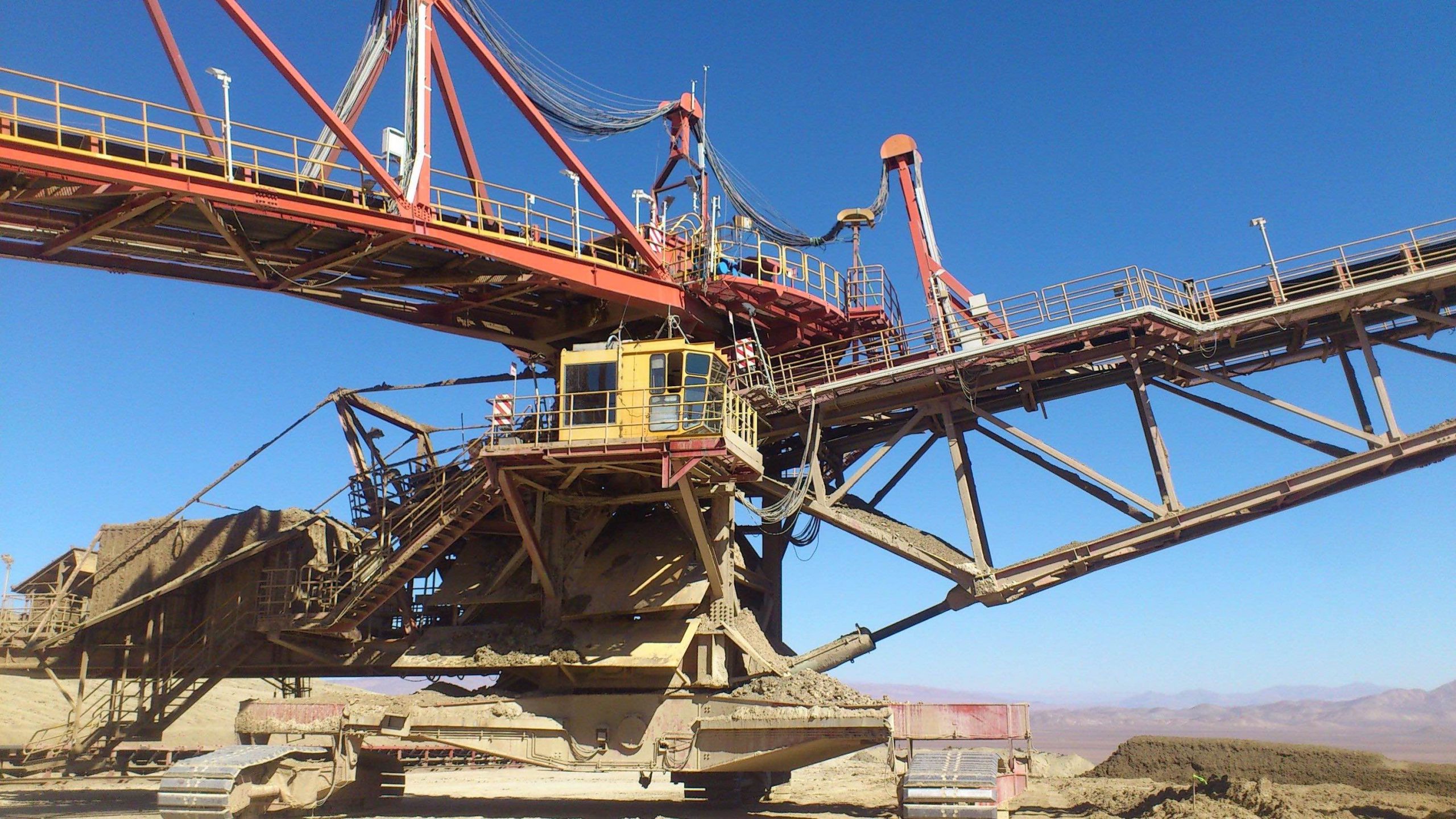The Minera Gabriela Mistral (Gaby) is in the Antofagasta Region in Chile. It belongs to Codelco, a state-owned Chilean conglomerate that is the world’s single biggest copper producer, controlling about 20 percent of total global reserves. It is the first mining company in the world to produce 100% traceable copper cathodes. The achievement was possible thanks to a pilot plan that started in 2018 called the Master Sustainability Plan. The production process includes the stages of primary, secondary, and tertiary crushing. Remote operation of large machines like the spreader is becoming a trend in the mining industry. The operation of spreaders involves relevant risks related to terrain failures and downfalls, which causes the engine’s loss of stability and can produce serious injury to the operator. Furthermore, the operation of this kind of machine requires one or more assistants at the floor level. Codelco was seeking to eliminate the exposure of employees from the risks caused by the operation of the spreader in Minera Gabriela Mistral, mainly moving structures, and improving productivity.
Challenge
- The main challenge was related to time constraints.
On the one hand, there were limitations on the total time available to finish the project. On the other hand, the scarce availability of stops to intervene in the machine was also part of the challenge. An electronic and electromechanical workshop was installed at the mine, which supplied the assembly and configuration teams.
Solution
Develop a customized teleoperated operations centre to provide safety and quality of life to the personnel, taking out the spreader’s workers. The project includes:
- Remote operations console.
- Video system with cameras to allow a single operator to get a full view of the spreader and the environment around it.
- Ad hoc design of specialized network for data transport.
- Development and integration of remote control and security routines into the native control devices (PLC) of the spreader.
The turnkey project involved the development of connectivity of telecommunications networks with low latency and high availability. The system ensures reliability and the transport of multiple high-definition video sources, and the essential signals from the control network. It also made the remote operation possible by creating an entirely new console system for the remote operator.
The hardware choice was consistent with demanding conditions like high solar radiation, gusts of wind and dust, considerable thermal oscillation and an acid atmosphere.
Furthermore, the stacker structure suffers significant vibrations during its operation, so devices had to include vibration resistant features and connectors. Finally, a special resistant corrosion epoxy paint was applied in mounting supports, and all connections had to be sealed.
Result
- A control/telecommunication/automation system for the spreader that allows its remote operation.
The workers are now located at a teleoperation centre with enormous safety and efficiency gains. The operators feel a real improvement in their quality of life, so they quickly adapted their routines to the new system. Remote operation allows you to significantly reduce travel times, shift changes, and handling contingencies. Its impact on productivity is significant.
Gaby has been at the forefront in the adoption of autonomous equipment. This teleoperated spreader has accentuated this trend. As in other cases, it improved radically both safety and productivity, gaining rapid adoption and praise from all the people directly involved.






